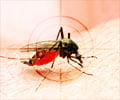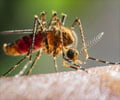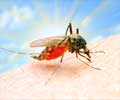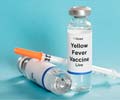Study findings could aid in interrupting transmission chains and reducing severe illness.

‘Large urban centers provide a source of dengue [genetic] diversity that could possibly be dispersed to other areas of the country and world.’





For their study, the researchers genetically sequenced the viruses of 640 dengue infections that occurred in densely populated Bangkok, Thailand, between 1994 and 2010. They then overlaid this information on a map showing where 17,291 people infected with the disease lived. Their results showed that in cases where people lived fewer than 200 meters apart -- that is, in the same neighborhood -- 60 percent of dengue cases resulted from the same transmission chain, meaning they stemmed from the same mosquito or family of mosquitoes. In people who were separated by a wider distance of one to five kilometers, just 3 percent of cases came from the same transmission chain, said the study's senior author, Derek A.T. Cummings, a professor of biology at UF's Emerging Pathogens Institute and an adjunct professor at the Bloomberg School.
"Our findings suggest that large urban centers provide a source of dengue [genetic] diversity that could possibly be dispersed to other areas of the country and world," Cummings said.
However, in the areas of Bangkok with the highest population density, the researchers found less diversity than expected.
"This suggests that these areas might be where intense competition is occurring between dengue viruses," Cummings added.
Advertisement
While the related dengue viruses stay close to home in a single dengue season, the viruses eventually mix across the country by the next season. Despite the eventual cross-country mixing, the researchers say that the virus strains stayed mostly within the borders of the country, and they aren't entirely sure why.
Advertisement
This has important implications for the introduction of dengue vaccines, which are starting to be rolled out, as individual countries will have to rely on their own efforts to control the disease, he said.
Forty percent of the world's population is at risk of the virus, which is most common in Southeast Asia and the western Pacific islands and has been rapidly increasing in Latin America and the Caribbean. While most of the people who contract dengue survive with few or no symptoms, more than two million annually develop what can be a dangerous hemorrhagic fever, which kills more than 25,000 people each year -- mostly children.
Source-Eurekalert












